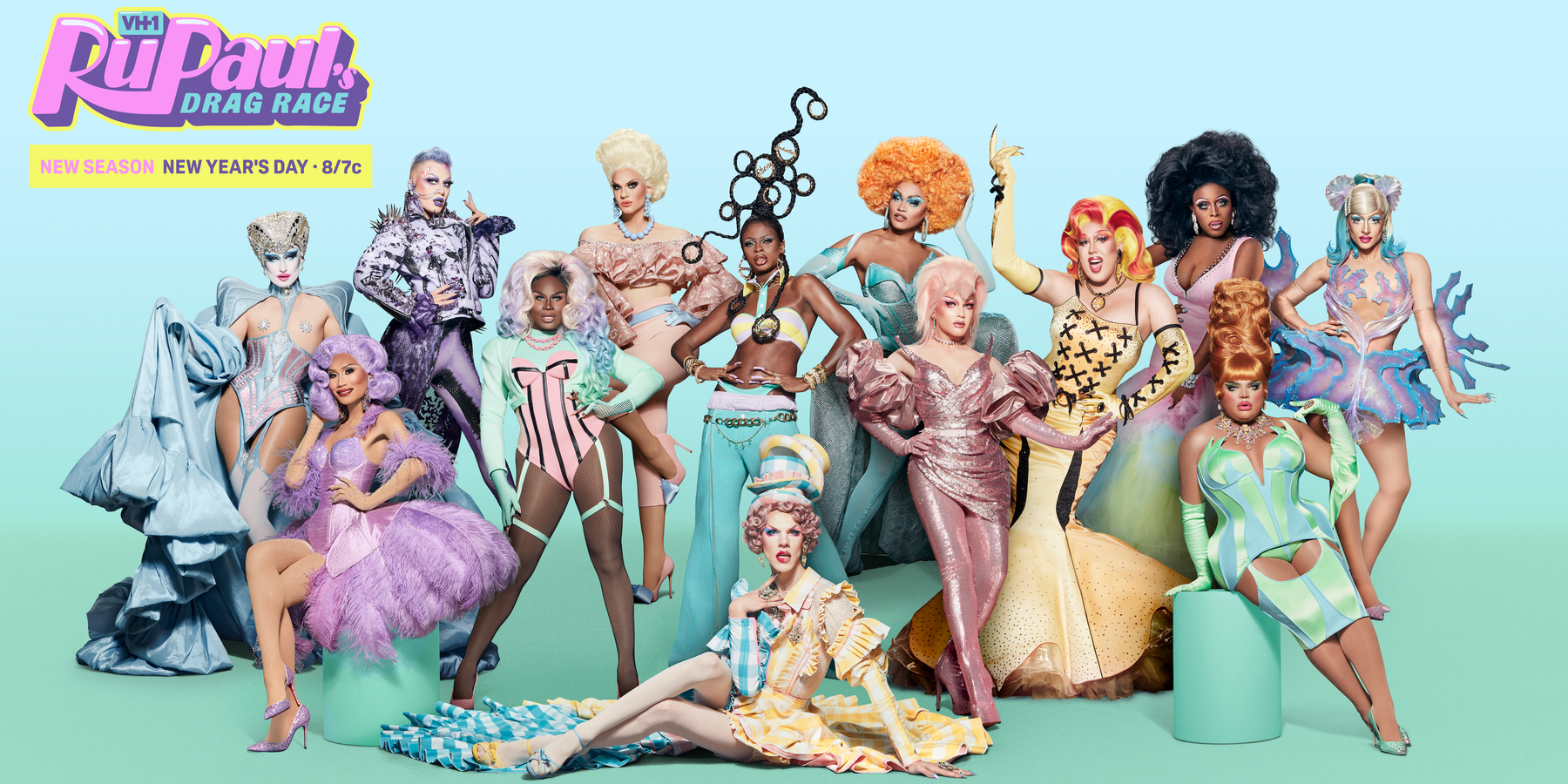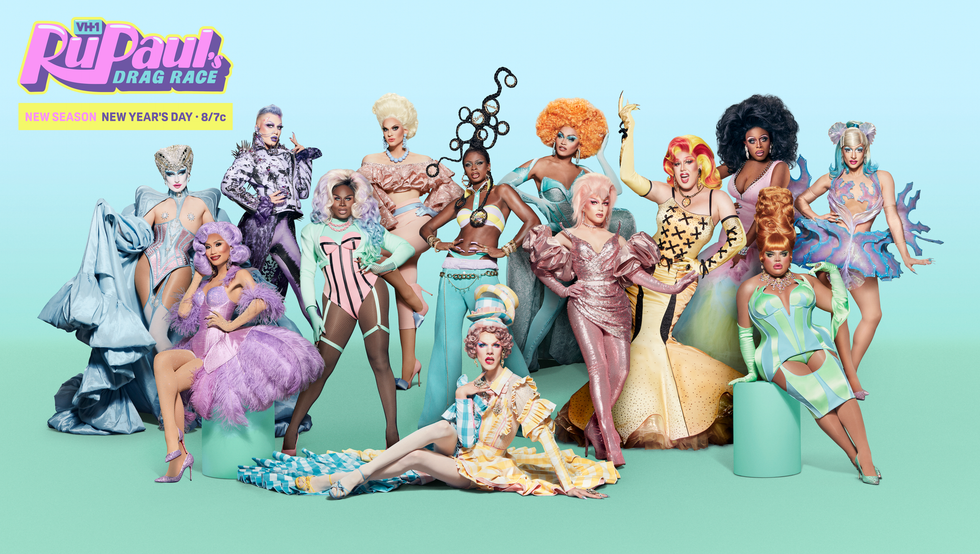
Michelle Visage on 13 Years of 'Drag Race'
by Roytel MonteroDec 28, 2020

This article is a sponsored collaboration between VH1 and PAPER
When it comes to "making it" in show business, several old sayings apply. They say it takes 10 years to become an overnight success, that your "big break" comes once if you're lucky and, in the event of surprises, the show must go on. For the record-breaking RuPaul's Drag Race, premiering its 13th season on New Year's Day at 8/7c, the sayings have proven true — with some major exceptions.
The same can be said for Michelle Visage, who has been a fixture on the show — and the internet — with her GIF-worthy judging since Season 3. After first airing in 2009, RuPaul's Drag Race has achieved popularity so massive and culture-shifting that it's taken college courses to fully understand the impact.
Keeping up the phenomenal pace, a new cast has been announced to close out one of the most successful years for the franchise in its history. This year had Season 12, All-Stars 5, and the premiere of both Canada's Drag Race and Drag Race Holland — and now Season 13 is kicking off with a simulcast over six networks that include MTV and its original home, Logo.
What else makes this season fresh? "Each one is different because each season has different dolls," Visage says. Of course, the talent always sets the bar for the competition and no two seasons have had the same roster of queens, but something else makes Season 13 special. Filmed during the coronavirus pandemic, production included safety measures like social distancing, queen quarantine, mask-wearing and panel dividers at the judging table. This level of awareness is something Visage says sets the tone for the competition. "I think everybody is really conscious this season and they were so aware of everything they did that it brought another element to this season," she says.
As for what hasn't changed, the no-nonsense judge is still adamant on the most important qualities in a queen. "The best thing to be is vulnerable and authentic, and that's what Ru and I fall in love with most of all," she says. Loved for delivering some of the show's harshest critiques over the years, Visage says getting tougher with her judging is actually out of necessity. Queens coming on the show today have an exponentially wider frame of reference for drag, so good excuses are also limited. "These kids are getting craftier and craftier and my eyes are getting worse and worse, so the glasses are now on every time they're on the runway," she says. "They're getting that good that it's harder to judge, so I stay on top of my game the same way."
The 13 queens hitting the Werk Room on January 1st include Kahmora Hall, Denali, Elliott with 2 Ts, Gottmik, Joey Jay, Kandy Muse, LaLa Ri, Olivia Lux, Tina Burner, Rosé, Symone, Tamisha Iman and Utica Queen. The fierce group comes from all around the country with each contestant offering a piece of the diverse drag community. For queens like Gottmik, making it onto the show also means making history as the first trans male drag queen to compete for the title of "America's Next Drag Superstar." This casting is an exciting chance "to show people how inclusive the world of drag really is," according to Visage.
More success and a broader network reach for contestants also mean higher stakes. The season's twist kicks off with six lip sync battles, making it critical for the queens to come through without error. And yet, Visage reveals that there are some critiques she has to give every season. "There are still queens in Season 13 that do not know how to sew," she says. While this major pet peeve has been something of a rite of passage in past seasons, most queens have learned how to appease the tough-as-nails judge. "Most of the things that really bother me, the queens know to kind of shift and they know what Michelle's not gonna go for so it makes them finish a dress and hopefully not just wear a leotard or a bodysuit with some gems stuck to it," she says.
While fussing over the small details is the joy of getting to judge a show like RuPaul's Drag Race, Visage does not forget the bigger picture. "This is a once in a lifetime thing that we're experiencing now," she says. "RuPaul is the entity; he is the reason why it's happening, but all of these kids are so talented so we can't take that for granted."
After all, the art form of drag has come a long way since Visage was first introduced in New York City's nightclubs of the '80s. She hit the ballroom floors, learning Old Way voguing from Willi Ninja and even dancing on the first television broadcast of the style on The Latin Connection in 1988. As one of the few cisgender white women on the scene during that time, she became immersed in a community of Black and Latinx performers who pioneered a scene where drag first thrived.
With a show like RuPaul's Drag Race, the multidisciplinary artists from spaces like these have the world stage. "The culture of Drag Race has taken over the world in that it gives people and artists a valid format," Visage says, highlighting how drag performers have been integrated in an entertainment landscape that keeps evolving and growing — and that's something to be excited about.
Not only has the social climate progressed enough to accept — and champion— drag, but the drag itself has gotten better, thanks to technology and persistence. "From putting socks down your shirt, [drag] has evolved a ton from makeup primers, makeup setting, lace fronts that are custom, lashes that you don't need 17 pairs of, press-on nails at my length instead of active length for bank-tellers," Visage says, laughing.
Ring in the Ru-Year with the Season 13 premiere of RuPaul's Drag Race on January 1 at 8/7c on VH1, Logo, MTV, MTV2, Pop and the CW.

Photo courtesy of VH1